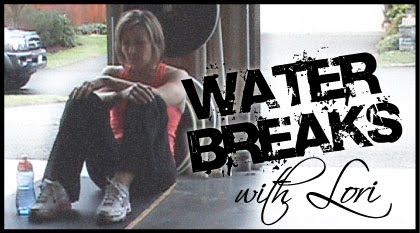If you do not have a good squat, you don't have much. Because if you can't squat, you can't snatch. If you can't squat, you can't clean & jerk. And if you can't lift, life is not worth living. Because why? Let's say it together... "Because Olympic weightlifting is the coolest sport on the planet." Period. Yes, you may quote me.
Seriously, without a good squat, there are around a gazillion things you can't do. Well maybe not a gazillion, but heck of a lot of really cool stuff.
The squat is THE foundation movement for Olympic weightlifting. Just listen to what Greg Everett has to say about this -- “The squat is foundational to the Olympic lifts as a position, a movement and a strength exercise. Without a well-developed and consistent squat, neither pulling technique nor pulling power will produce entirely successful Olympic weightlifting.”
Sounds like a squat is a pretty big deal, huh? So, to reiterate, if you can’t squat, you don’t have much.
Okay, I know what you are thinking "can't I just power snatch and power clean, if my squat sucks?" Well, technically, sure -- if you want to remain a wussy forever --because you'll never reach your true max lift. So if you don't care about living up to your max potential, stop reading at this point. But if you're like the rest of us total badass (or admittedly wannabe badass) Oly lifters, you'd remove a rib to PR on a lift. So if you fall in to this camp, perfect your squat.
So, what distinguishes a power snatch or a power clean from a snatch and a clean? To give a simple answer is to say, it is the height at which you receive the weight. “Power” indicates that the bar was received above parallel. But what really determines where the lift is received? Well, that comes down to the combination of the force applied to the lift, the amount of weight on the bar and the mass/strength of the lifter. So this basically means that the lighter the load, generally speaking, the higher you will be able to receive the weight. As the load gets heavier, the bar “will accelerate less and not travel as high” (Greg Everett). So here is the deal. The heavier you lift, in proportion to your strength, you will receive the bar in a lower position. You will find it necessary to get under it and receive it in a full squat.
 |
| The amazing Aimee Anaya-Everett |
So, if you care as much as I do, and why the heck wouldn’t you? I would suggest that you purchase the bible of this very awesome sport, “Olympic Weightlifting, a complete guide for coaches and athletes, second edition,” written by Greg Everett of Catalyst Athletics. I don’t actually know if it’s the best book out there, but I have certainly gotten more use out of it than I’d ever thought possible. But hey, I am a chick who reads about this stuff for fun. I will assure you, however, that it’s easy to understand and it gives clear and concise information for beginners to advanced lifters. It is a must-have in my humble opinion. And we all know how humble I am.
Anyway, some lucky people are blessed with the natural flexibility to achieve the proper squat depth necessary while maintaining an upright torso posture. Others have to work hard to get there. It can be a lengthy process. Well worth the work, however. If the payoff is a killer heavy snatch, and clean and jerk? Or at the very least, you’ll look super cool doing it? Need I say more?
So, I do not want to be completely repetitive, but I will, and stress again . . . perfect your squat. How do we do this? Practice. Practice. Practice. And get some good coaching. Find someone who can recognize good/poor positioning, solid technique and therapies for individual issues. If you don’t have access to a trainer, then get on the internet and read. Buy books, watch videos. There is a lot of great information out there. Check out Catalyst Athletics. They are a super great resource for articles and videos.
I will leave you with one final thought. In the infamous words of Snoop Dogg, "drop it like it's hot." I mean your ass, not the bar.



Good post Lori! Wish you were here to train me! Love ya sis!
ReplyDelete